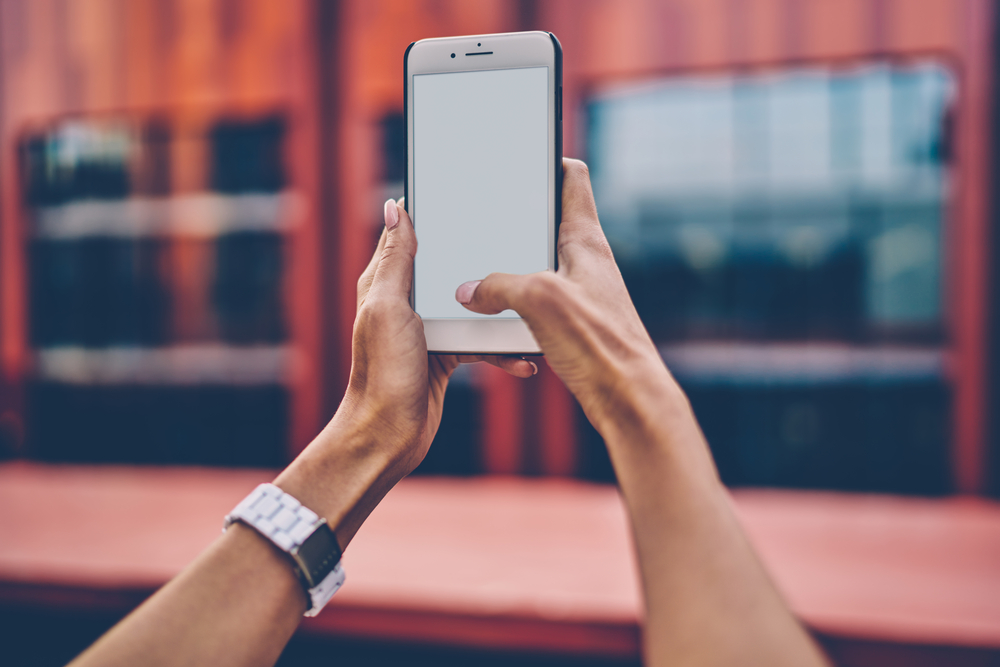Your Ultimate Guide to eCommerce Personalization and Tailored Product Discovery
Competition among online stores keeps increasing yearly, mainly because many offer similar products. To stay competitive, you need to provide customers with a unique shopping experience. One of the most effective ways to achieve this is through eCommerce personalization, which is gaining popularity worldwide due to technological advancements like machine learning, big data, and artificial intelligence.
Let’s dive deeper into the personalized user experience in online shopping and explore strategies you can utilize to integrate this approach into your eCommerce business.
What is eCommerce personalization?
Personalization in eCommerce means delivering individualized interactions and experiences through online shopper behavioral analysis and data. For example, you can utilize information about previous purchases, browsing behavior, location, language preferences, and so on.
Think of it like this: when a customer walks into a physical store, your consultants are aware of what they need and which brands they prefer. So, recommendations become more relevant, increasing the likelihood of a purchase. Real-time personalization in eCommerce is the same.
8 components that can be personalized in your eCommerce store
eCommerce platforms can personalize various sections of their website and marketing channels. It’s not necessary to integrate this approach everywhere; you can choose a few components, test them, and assess their effectiveness.
Here’s what you can choose from:
- Product recommendations. When a user visits a website, they want to see relevant offers. For each consumer, this list can be different. To show personalized product recommendations, machine learning technology is used. It can analyze various data, e.g., purchase history, location, or similarities between goods. Thus, you can show specific items for purchase to a user. Another example is utilizing information about the user’s location and weather conditions, where clothing online stores can recommend warm items if it’s cold in the consumer’s region.
- Homepage content. Imagine that every time a user visits your website, the content changes; it greets customers by name and offers unique banners with special deals. To implement such functionality in your online store, you need to familiarize yourself with dynamic content technologies. It is based on creating databases of individual user information. For example, a consumer visits your online store for the first time, browses available products, and adds some to their wishlist. When they return after some time, they may be greeted with a “Welcome back” message. Personalized content marketing reinvents the way people interact with brands.
- Email marketing campaigns. Online retailers can personalize emails for their users based on purchasing behavior or browsing history. For example, when a client makes a purchase, you can send a thank-you letter along with recommendations for other relevant products. Or, you can offer special birthday promotions to your customers. Another approach lies in triggered emails, which are initiated after a particular action by the consumer, such as subscribing to a newsletter.
- Search results. Some shopping platforms set smart search functionality; when a user begins typing a keyword into the search bar, the system automatically suggests options. You can customize this approach through eCommerce personalization. For example, it’s possible to generate a list of recommendations based on the user’s previous search history.
- Product pages. With personalization, you can tailor product cards to match user preferences. For example, it’s possible to include size and fit recommendations. Customers of your online store can share their recent purchase data and body measurements to facilitate this. Besides, integrating dynamic content technology into product cards allows visuals to be customized based on customer preferences and location.
- Pricing models. Online retailers can flexibly manage product demand through dynamic pricing. This approach tailors costs individually for each user or group. Moreover, it considers factors like item popularity, seasonality, stock inventory levels, location, and time of day. For example, dynamic pricing can attract new customers by offering them lower prices.
- Loyalty programs. Personalization technology in retail presents numerous opportunities for tailoring loyalty programs, depending on your objectives. For example, you can offer unique rewards to your users by analyzing their preferences, purchase history, and behavior. This could include discounts on desired items or access to exclusive products. Moreover, you can combine gamification marketing techniques with personalized loyalty programs to achieve more engagement. For example, create trigger events and invite your loyalty program members to participate in mini-games to earn special prizes.
- Customer support. AI for eCommerce personalization expanded the capabilities of support with custom chatbots. Companies can upload information to databases in order to maintain a brand tone of voice and address frequently asked questions. This approach also allows for the use of personal user information to make responses more relevant. Another great direction is predictive support, where the system identifies potential issues for specific customers and resolves them early in the user journey.
Tools for implementing personalized marketing strategies
Since you can experiment with different options for one marketing channel, eCommerce personalization tools are extensive. Below are some popular options developed for different goals and needs:
- Amazon Personalize. This solution, powered by machine learning, comes from the technological subsidiary of the retail giant. With it, you can analyze user data, segment your clients into categories, create custom product recommendations, and get AI-driven customer insights.
- Insider. This platform is utilized for cross-channel marketing, gathering user data from various sources such as websites, CRM, and customer support systems. The collected information can then be used to customize email campaigns, SMS, web push notifications, social media, etc. Insider also provides behavioral segmentation and predictive analysis tools. Moreover, it offers ready-made templates for integration.
- Bloomreach. Specifically for the eCommerce segment, this platform has developed a separate AI-enabled solution called Loomi. It can create unique product recommendations, personalize search queries, and work with remarketing. The main feature of the platform is its ease of integration.
- Nosto. This solution can help you customize the product and content sections of your website. For example, configure custom searches, product recommendations, triggered email messages, and behavioral pop-ups. Its main feature is a revenue-sharing pricing model where businesses only pay for sales generated through the platform.
Benefits your online store can achieve through eCommerce personalization
The primary aim of personalization is to streamline the user experience. Before special tools came into play, the customer journey typically unfolded as follows:
- Customers would compare prices and features, often spending a lot of time due to the abundance of retailers offering similar products.
- They were only presented with a limited selection of products on the page, which might not align with their interests or needs.
- The search feature was often inefficient, leading to frustration when results didn’t match expectations.
- The content provided by retailers didn’t resonate with individual customers, despite various advertising propositions.
Personalization addresses these challenges. For example, imagine a user searching for sneakers to purchase. With customer journey personalization, it looks like this:
- The system analyzes their purchase history and interests.
- It recognizes previous interactions with running sneakers, indicating a preference.
- The system suggests relevant options for running sneakers, allowing for tailored product discovery.
Now, let’s explore eCommerce personalization benefits in more detail.
Increased customer satisfaction
Netizens are overwhelmed with information that may not be relevant to them. By providing your customers with exactly what they need, you alleviate their need to sift through options. As a result, users are more likely to favor your brand and feel satisfied. The trusted business consulting firm Infosys states that 59% of shoppers who have experienced personalization say it affects their purchasing decisions. Personalization can also be a part of your customer retention strategies.
Keeping your clients more engaged
Personalization and customer engagement are interlinked. Forbes suggests that successful companies meticulously plan every interaction with their brand. When businesses prioritize customer experience and emotional connections, consumers become more engaged.
For example, personalized email marketing for eCommerce timed with customers’ birthdays or other significant dates can significantly boost engagement. Everyone appreciates feeling remembered and valued.
Higher conversion rates
Improving conversion rates with personalization is something that concerns every business. However, selling to customers who don’t have a need is practically impossible. By offering users relevant products, you eliminate the time spent searching, thus streamlining their journey to making a purchase.
According to the American management consulting firm McKinsey & Company, effective personalization can increase online retailers’ sales conversion by 10-15%, compared to the average market rates of 1-3%.
Enhanced customer loyalty
Personalization is a way to show that you genuinely care about your clients, addressing their needs and preferences. When customers feel valued, they’re inclined to trust and stay loyal to a brand. This leads to repeat purchases, higher customer lifetime value, and positive word-of-mouth referrals, all of which strengthen customer loyalty even further.
Reduced risks of cart abandonment
Users may abandon their carts for different reasons, such as finding the checkout process too complicated or getting distracted. Personalization can help tackle all these issues.
For example, if the checkout process is overly complex, the system can automatically fill in essential fields with information like name, surname, and date of birth. If a distracting factor causes cart abandonment, you can set up a triggered email to remind a user about their unfinished purchase.
Better targeting
Previously, advertising on social media and search engines was based solely on consumer interests. However, this technology has become more advanced, leveraging a wealth of data. This has led to the emergence of behavioral targeting in eCommerce, which considers factors such as search queries, visited websites, and past purchases.
For example, you can gather user data using social media pixels. When a consumer spends significant time browsing a particular product on your website without making a purchase, you can “follow up” with them through ads on platforms like Facebook, TikTok, or others. This approach is effective because consumers typically need seven touch points with your products before deciding to buy.
Competitive advantage
Not every business can invest in customization, making it a potential competitive advantage. While this approach requires time for gathering information, as a result, users truly value a personalized shopping experience and relevant communication.
8 best practices for implementing personalization into your eCommerce strategy
There are various tactics for personalizing your eCommerce business. Some may be more technically complex, while others might deliver better results and be simpler to implement.
Here are a few eCommerce personalization best practices that work well in almost any situation.
#1. Show items previously viewed
Browsing online stores, customers often look at multiple products. For example, they might be comparing similar items from different brands. At this stage, a customer is just exploring what to add to their cart. Sometimes, they end up losing the products they planned on purchasing. To prevent this issue, consider adding a “Recently viewed products” section to your website. This allows users to quickly revisit items they’ve already considered and add them to their cart.
#2. Feature items purchased in the past
Your users may purchase specific items every month. Nonetheless, without personalization, they find themselves doing the same thing repeatedly—searching for their desired item or going through their purchase history. A straightforward solution is to show the necessary product right away or return the consumer to where they left off.
#3. Curate personalized lists of top-selling products
The social proof phenomenon works well in retail marketing; people tend to buy products used by others. To implement this approach for personalizing your eCommerce store, you can create lists of best-selling products by month or year.
Usually, best-selling product lists are determined by number of purchases, but you can experiment. For example, you can include popular items specific to a particular region or those with the highest number of reviews.
#4. Incorporate dynamic content customization on your homepage using UGC
User-generated content (UGC) is one more great example of how social proof works. However, online retailers often overlook it on their websites, preferring to only feature such posts on social media. This can be a missed opportunity. When you showcase user-generated content on your homepage, your consumers can immediately see how your products look in real life, which builds trust in your brand.
With this approach, you can also display different types of UGC for different consumer segments. For example, if your online store sells clothing for men, women, and children, feature relevant photos based on the user’s gender. Show men’s pictures to male users and women’s and children’s images to female users.
#5. Adapt user interactions based on their behavior
You can flexibly guide user behavior on your website using triggered events and source data. There are multiple approaches to do this. For example, it’s possible to track the session duration of individual users and, after a certain period, display a pop-up window offering them a gift in exchange for subscribing to your email newsletter.
Another strategy is to attract new customers by offering dynamic pricing and special deals. To do this, you need to create a distinct category for users who are visiting your site for the first time.
#6. Leverage behavioral retargeting techniques
Not all retargeting efforts on social media lead to results. Often, this is because users are simply browsing products without the intention to buy, or the goods have become irrelevant to them.
To reduce advertising expenses on retargeting, try building campaigns based on your users’ behavior. For example, the likelihood of a consumer purchasing is much higher if they recently left your site. On the contrary, the longer it’s been since visiting your online store, the less likely consumers buy.
#7. Configure smart email notifications based on user behavior
Email marketing can be a powerful tool for personalization when utilized properly. If a user shares their contact details with you, send various messages tailored to specific events, like the following:
- Welcome emails. Sent to users making their first purchase through your online store. You can also offer personalized discount coupons or promo codes.
- Reminder emails. Sent to users who abandon their carts. Simply remind them that their purchase is incomplete and offer enticing options, like free shipping.
- “We miss you” letters. Sent to customers who haven’t purchased in a while. In this email, you can curate a personalized list of new products to encourage them to explore your offerings.
- Order follow-ups. Sent to customers who’ve already made a purchase. For example, these could be messages informing them that their package is packed or ready to be shipped, providing clarity on their order status.
#8. Utilize A/B testing
Personalization and A/B testing should go hand in hand since custom solutions rely on extensive data, but still require understanding user preferences and precise measurement. A prime example is several teasers Netflix created to promote its “Stranger Things” series.
A/B testing can also enhance UX design personalization. For instance, you can develop multiple versions of the checkout page interface and measure completion rates for purchases in each scenario. You can compare results using eCommerce analytics tools like GA4 and heatmaps.
Real-world eCommerce personalization case studies
To incorporate personalization into your marketing, it’s important to find a unique approach. However, you can study real-life examples from leading online retailers.
Amazon
Amazon can be considered a pioneer of personalization; the company began moving in this direction in the late 1990s. During this time, the retailer started displaying product recommendations based on past purchases and browsing history. A significant breakthrough occurred in 2010 when the company introduced the “Customers Also Bought” widget. This decision led to a surge in sales.
Another personalized solution implemented by Amazon is predictive analytics. These systems evaluate previous customer experiences and can accurately forecast which product will be purchased next, even if the user has never searched for it.
Land Rover
Land Rover sells luxury cars, which can be a difficult sell. Nonetheless, omnichannel personalization strategies help the brand find its target audience, convey the right messages, and display relevant products.
One of Land Rover’s strategies is location-based targeted advertising campaigns. For example, if you live in an area with rough roads, the company may show you advertisements for the Defender off-road vehicle, whereas if you’re in the city, you might see ads for an elegant Range Rover.
Otrium
This boutique fashion brand shows that personalization is achievable even for smaller retailers. To boost retention, the company sends “we miss you” emails to customers who haven’t visited the website in a year. To encourage making an order, these e-letters include discount coupons.
Starbucks
60+% of Starbucks orders are personalized to suit individual customers. Firstly, the brand boasts a robust loyalty program that provides custom prizes tailored to specific purchase habits and preferences. These can be targeted birthday rewards, bonus stars for specific items, and exclusive offers.
The Starbucks mobile app can also remember a customer’s favorite stores and orders. Based on the data, it suggests menu items by the time of day/current weather conditions.
4 future trends in eCommerce personalization
To offer consumers a unique shopping experience and preserve positive relationships with them, familiarize yourself with the key personalization trends in eCommerce for 2024.
- Emotional personalization. Certain user behaviors are closely tied to their mood. For example, if someone rapidly scrolls through a page, they might be feeling tense. In such cases, simplifying your website interface could be beneficial. Conversely, if a user spends an extended time on a page, it suggests they are engaged; consider recommending relevant discoveries to them. An abandoned shopping cart may indicate uncertainty; set up retargeting campaigns that emphasize additional guarantees.
- AI-powered chatbots. Although personalized customer service powered by artificial intelligence has become a standard practice for retailers since the introduction of language models, it’s still crucial to adapt these communication channels to a brand’s specific characteristics and the needs of its consumers. For example, chatbots can track certain patterns in your customers’ behavior to provide them with timely and relevant assistance in real-time.
- Ethical personalization. At times, personalization can play a cruel trick on brands. For instance, sending a unique offer to someone you know is getting married soon may come across as an intrusion into their personal life. Another example is dynamic pricing based on perceived wealth, location, and browsing behavior. Such an approach undermines the equality principle.
- Zero-party data. For users, their data confidentiality preservation is more crucial than ever, yet some brands don’t even disclose their data collection practices. On the contrary, forward-thinking retailers are embracing the concept of zero-party data, where users willingly share their information with businesses. One straightforward way to do this is by customizing your cookie policy, asking customers questions such as “How often would you like to hear from us?”, “What type of content would you find interesting to read?”, and “What has your past shopping experience been like with our online store?”
Wrapping up
A global business trend that has also impacted eCommerce is the emphasis on catering to each customer and making data-driven personalization. This approach differs from the past when companies focused on segmentation. Personalization is now seen as essential for staying competitive rather than just a luxury. Besides, consumers are increasingly willing to share their data with brands if it means getting more customized eCommerce experiences.









![Content Marketing Guide for 2020 and Beyond [Infographic]](https://depositphotos-blog.s3.eu-west-1.amazonaws.com/uploads/2020/08/Content-Marketing-Guide-for-2020-and-Beyond-Infographic.jpg)




